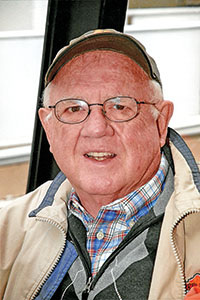Speaking to a group of equine veterinarians, noted horse trainer Buck Brannaman offered some solid advice farriers could use in dealing with owners and behavior concerns with their horses.
During the early December meeting of the American Association of Equine Practitioners in Nashville, Tenn., the veteran horse trainer explained how it seems like some horse owners tend to select their vet based on how well he or she gets along with their horses. These owners tend to ignore the fact that untrained horses are difficult to work with.
In fact, some owners seem to believe a farrier or vet can deal with every horse regardless of the circumstances.
Client Education Is Critical
Adopting some of Brannaman’s natural horsemanship ideas may make it easier for farriers to better understand and work with the horses of their clients. He maintains footcare providers will benefit immensely from taking the time to encourage owners to get a better picture of what goes into the behavior and mentality of their horses. This includes encouraging clients to spend time working with their horses, such as teaching them to lift their feet for the farrier. By doing so, owners will have their horses better prepared to deal with any unexpected problems that come up.
Horses Need To Feel Safe, Secure
Brannaman finds most horses have a tendency to do things they’ve seen other horses doing. And he believes an owner, farrier, veterinarian, rider or other handler should start working with a new horse by creating a small space around the individual that the horse will respect when asked to move. Believing that you need to go through the horse’s feet to get into the head, he says farriers should apply gentle pressure to keep the horse’s feet within an imaginary small rectangle, yet be a space that contains several potential exit doors for the horse.
By dealing with a horse in a pleasing manner, Brannaman says a farrier can keep the horse from leaving this small space when any number of concerns come up. If you do everything possible to keep the horse comfortable until the pressure is eliminated, the horse can find a peaceful place to stand and be in a good frame of mind when you work on its feet.
With some behavior concerns, Brannaman says owners often expect a farrier or veterinarian to find something physically wrong with the horse. That’s their way of not being willing to admit or understand that a lack of training is likely the real concern.
What are your thoughts on how owners reach a decision on hiring a new farrier or deal with behavior issues with their horses? Please email me a note with some of your ideas at lessitef@lessitermedia.com so I can share your thoughts with other American Farriers Journal E-Tip newsletter readers.








Post a comment
Report Abusive Comment